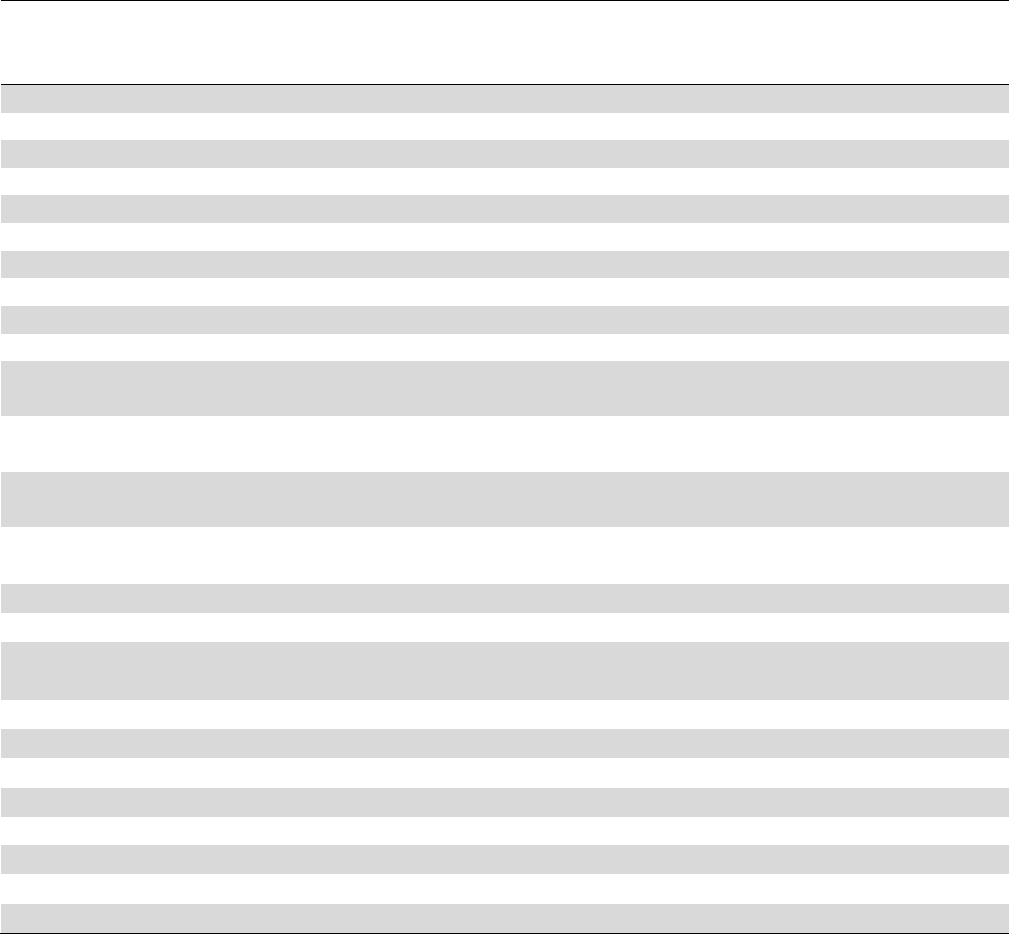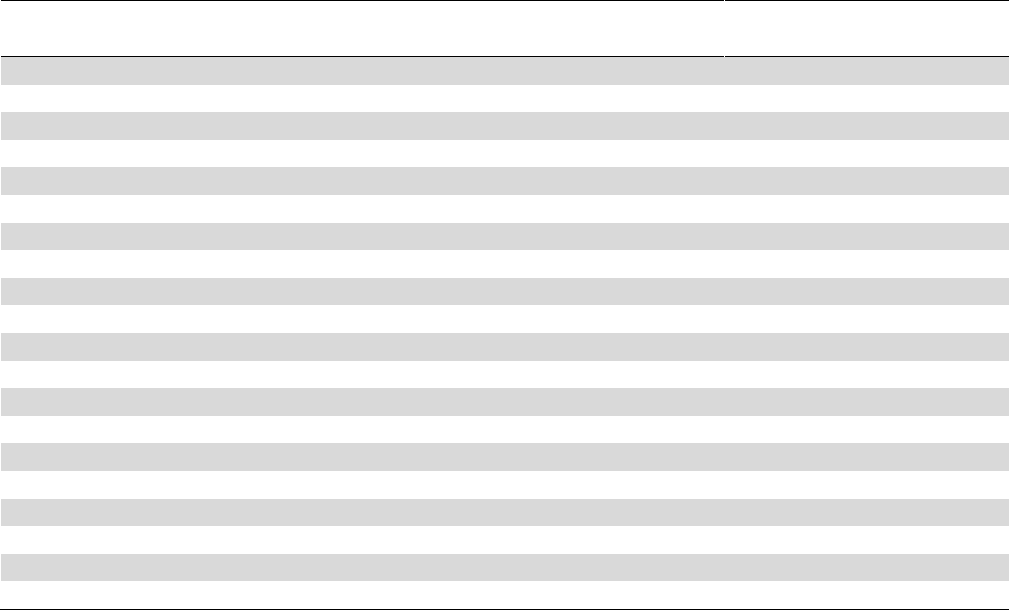
+63&>3<!=C@</:=4&11C>/B7=</:+63@/>G+63&>3<!=C@</:=4&11C>/B7=</:+63@/>G
-=:C;3
AAC3
.7<B3@
@B71:3
!/<C/@G
)3:/B7=<A67>A3BE33<*3<A=@G'@=13AA7<5+3;>3@/;3<B)3:/B7=<A67>A3BE33<*3<A=@G'@=13AA7<5+3;>3@/;3<B
6/@/1B3@7AB71A4=@44=@B4C:=<B@=:/<2F31CB7D3C<1B7=<7<6/@/1B3@7AB71A4=@44=@B4C:=<B@=:/<2F31CB7D3C<1B7=<7<
*16==:5367:2@3<*16==:5367:2@3<
)/163:7/;/<B
+*B7::,<7D3@A7BG=43/:B6*173<13A,*
@27/;/<B/BAC32C
%/B/A6/*;3B
%=@B63@<@7H=</,<7D3@A7BG,*
</B/A6/A;3B</C32C
=::=EB67A/<2/227B7=</:E=@9A/B6BB>AA16=:/@E=@9AE;71632C=8=B
'/@B=4B63&11C>/B7=</:+63@/>G=;;=<A
)31=;;3<2327B/B7=<)31=;;3<2327B/B7=<
7/;/<B)*;3B%)3:/B7=<A67>A3BE33<*3<A=@G'@=13AA7<5+3;>3@/;3<B
6/@/1B3@7AB71A4=@44=@B4C:=<B@=:/<2F31CB7D3C<1B7=<7<*16==:5367:2@3<
+63&>3<!=C@</:=4
&11C>/B7=</:+63@/>G
6BB>A2=7=@5
+67A2=1C;3<B6/A033</113>B324=@7<1:CA7=<7<+63&>3<!=C@</:=4&11C>/B7=</:+63@/>G0GB63327B=@A@33
=>3</113AA7A>@=D72320G*16=:/@.=@9A/B.$,=@;=@37<4=@;/B7=<>:3/A31=<B/1BE;C
A16=:/@E=@9AE;71632C

)3:/B7=<A67>A3BE33<*3<A=@G'@=13AA7<5+3;>3@/;3<B6/@/1B3@7AB71A4=@)3:/B7=<A67>A3BE33<*3<A=@G'@=13AA7<5+3;>3@/;3<B6/@/1B3@7AB71A4=@
44=@B4C:=<B@=:/<2F31CB7D3C<1B7=<7<*16==:5367:2@3<44=@B4C:=<B@=:/<2F31CB7D3C<1B7=<7<*16==:5367:2@3<
0AB@/1B0AB@/1B
/195@=C<2
*3<A=@G>@=13AA7<5036/D7=@AB63B3;>3@/;3<B16/@/1B3@7AB714=@344=@B4C:1=<B@=:/<2
3F31CB7D34C<1B7=<>@=;=B3A3:4@35C:/B7=</1B7D7BG3<5/53;3<B/<2>@=0:3;A=:D7<5+67AABC2G
3F/;7<327<B3@@3:/B7=<A67>A03BE33<3F31CB7D34C<1B7=<344=@B4C:1=<B@=:/<2A3<A=@G>@=13AA7<57<
A16==:/532167:2@3<03BE33</<2G3/@A=4/53
$3B6=2
3A1@7>B7D31=@@3:/B7=<@3A3/@1623A75<E/ACA32B=3F/;7<3@3:/B7=<A67>A=4=CB1=;3A4@=;
B6@331/@357D3@@3>=@B32AB/<2/@27H32?C3AB7=<</7@3A=4036/D7=@A@3:/B32B=A3<A=@G>@=13AA7<5
*3<A=@G'@=J:3
344=@B4C:1=<B@=:
+3;>3@/;3<B7<$722:367:26==2(C3AB7=<</7@3
/<23F31CB7D3
4C<1B7=<
36/D7=@)/B7<5 <D3<B=@G=4F31CB7D3C<1B7=<
7<2/7:G/1B7D7B73A%
)3AC:BA
/B//</:GA7ACA7<523A1@7>B7D3AB/B7AB71A/<2*>3/@;/<IA
)
@3D3/:32AB/B7AB71/::GA75<7J1/<B
>
D/:C3>=A7B7D3/<2<35/B7D31=@@3:/B7=<A03BE33<1=<AB@C1BA=43F31CB7D34C<1B7=<344=@B4C:
1=<B@=:/<2A3<A=@G>@=13AA7<5036/D7=@A&<:G>=A7B7D31=@@3:/B7=<AE3@34=C<203BE33<A3<A=@G
>@=13AA7<5036/D7=@A/<23F31CB7D34C<1B7=<
=<1:CA7=<
7<27<5A7<271/B3B6/BBG>71/:@3A>=<A3AB=A3<A=@G3F>3@73<13AE3@3@3:/B32B=BG>71/:
/07:7B73A4=@3F31CB7D34C<1B7=</<2344=@B4C:1=<B@=:E63@3/A7<1@3/A32A3<A=@G@3/1B7D7BGE/A/AA=17/B32
E7B6231@3/A32/07:7B73A4=@3F31CB7D34C<1B7=</<2344=@B4C:1=<B@=:/:=<5E7B6/<7<1@3/A323F>@3AA7=<=4
7;>C:A7D7BG@32C132/BB3<B7=</<2231@3/A32=<B/A9036/D7=@&CB1=;3AAC>>=@BB63<332B=/22@3AA
A3<A=@G@3A>=<A7D3<3AA/<2@3/1B7D7BG7<B631=<B3FBB=AC>>=@B036/D7=@;/</53;3<B4=@344=@B4C:
1=<B@=:/<23F31CB7D34C<1B7=<
=;;3<BA
+63/CB6=@A231:/@3B6/BB63G6/D3<=1=;>3B7<5J</<17/:>@=43AA7=</:=@>3@A=</:7<B3@3ABB6/B;756B
6/D37<KC3<132B63>3@4=@;/<13=@>@3A3<B/B7=<=4B63E=@923A1@70327<B67A;/<CA1@7>B
"3GE=@2A"3GE=@2A
/BB3<B7=<4=1CA036/D7=@/:7<6707B7=<A3:4@35C:/B7=<A3<A=@G
=D3@'/53==B<=B3=D3@'/53==B<=B3
7</<17/:AC>>=@BE/A>@=D72320G/./@<3@3@;/BC@=/<2+*,=/@2=4+@CAB33A)3A3/@16@/<B
AA7AB/<13E7B6@31@C7B;3<B2/B/1=::31B7=</<2A1=@7<5=4?C3AB7=<</7@3AE/A>@=D72320G:3F/<2@/
=<B@3@/A&+&+)#@7<*C::7D/<&+&+)#=::7)C7H&+&+)#/<2"/B63@7<3=:;3A&+
&+)#
@323<B7/:A7A>:/G
@)/163:7/;/<B'6&+)#'
@%/B/A6/*;3B&+&+)#
=>G@756BB@/<A43@/5@33;3<BA/@3<=B=0B/7<320G+63&>3<!=C@</:=4&11C>/B7=</:+63@/>G
&!&+)3>@7<B>3@;7AA7=<4=@B67A>>:732)3A3/@16A6=C:203=0B/7<324@=;B63
1=@@3A>=<27<5/CB6=@A:71963@3B=D73E=C@=>3</113AAAB/B3;3<B@35/@27<5CA3@@756BA
/<227AB@70CB7=<=4B67A>>:732)3A3/@16

Sensory processing behaviors have been identified as a factor in self-regulation and emotional
development in children (Critz et al., 2015; Dunn, 2007; Miller et al., 2007). Temperament and executive
function have been identified as neurological factors in behavioral styles, self-regulation, and social-
emotional development in children (Dixon et al., 2006; Edossa et al., 2018; Gioia et al., 2015; Henderson
& Wachs, 2007; Janson & Mathiesen, 2008; Rothbart & Bates, 2006). Research regarding the
relationships between temperament and sensory processing behaviors indicates that descriptive features
of temperament and descriptive features of sensory processing behaviors are interrelated (DeSantis et al.,
2011; Diamant, 2011; Gouze et al., 2012). Findings show that extreme behavioral reactivity toward
sensory experiences can play a role in the development of behavioral issues in children (DeSantis et al.,
2011; Gouze et al., 2012). Children with diagnostic conditions, such as autism, attention deficit disorder,
and reactive attachment disorder, often demonstrate issues with behavioral self-regulation and executive
functions (Critz et al., 2015; Diamond, 2013). Thus, the ability to identify factors that influence behavioral
self-regulation in children is a critical component in intervention planning and positive outcomes
regarding behavior management and activity engagement.
Behavioral Self-Regulation
Behavioral self-regulation is a construct that encompasses one’s ability to actively or passively
engage and respond to the demands of tasks and the physical and/or social environments (Dunn, 2007).
Individuals adjust their emotions, cognition, and behavior according to internal (i.e., body responses) and
external demands (i.e., contextual experiences) (McClelland et al., 2010). A child’s ability to adjust
emotions and behavior is a developmental process that emerges through daily experiences and
cultural/social expectations. Self-regulatory skills are crucial in early development and throughout the
lifespan and can have an influence on behavioral management and academic success (Caughy et al., 2018).
Several factors influence behavioral self-regulation, including brain and physiological maturation,
parenting styles, peer socialization, and contextual demands (Edossa et al., 2018; McClelland et al., 2010;
Rothbart & Bates, 2006).
Temperament and Effortful Control
Temperament is a compilation of behavior characteristics in a continuum and describes how an
individual may approach or interact within his or her context (Institute for Learning & Brain Sciences,
2016; Rothbart & Bates, 2006; Zentner & Bates, 2008). Temperament characteristics include behavioral
responses to fear, anger and frustration, positive affect and approach, activity level, inhibition, and
attention that relate to capacities that form individual differences in personality (Rothbart & Bates, 2006).
Theories of temperament indicate that differences in emotionality, activity level, and attention are based
on brain systems that shape a child’s behavioral reactivity and self-regulation (Institute for Learning &
Brain Sciences, 2016; Rothbart & Bates, 2006; Zentner & Bates, 2008).
Effortful control is a temperament characteristic defined by the ability to modulate responses, plan,
focus, and regulate emotions and actions through behavioral inhibition (Diamond, 2013; Simonds &
Rothbart, 2004). For example, according to Rothbart and Bates (2006), children with strong abilities for
effortful control can put off a desired activity, wait for a desired activity, or complete a less desirable
activity before starting a more desirable activity. Other children with fewer abilities for effortful control
might be more impulsive, more distracted, less attentive and/or have issues with task completion (Rothbart
& Bates, 2006). Thus, attentional control and inhibitory control are key components of effortful control
(Zentner & Bates, 2008).
1
SENSORY PROCESSING, TEMPERAMENT, EXECUTIVE FUNCTION IN SCHOOL CHILDREN
Published by ScholarWorks at WMU, 2024

Executive Function
Executive function is the neurological ability to direct or manage cognitive, emotional, and
behavioral functions to problem-solve. It involves three core abilities: inhibitory control, working
memory, and cognitive flexibility (Diamond, 2013). Inhibitory control allows an individual to control
impulses and respond appropriately to the situation. Working memory is the ability to use stored
information for application in an appropriate situation at a later time (Diamond, 2013). Cognitive
flexibility allows for adaptive thinking, taking responsibility for actions, and accepting unexpected
challenges (Diamond, 2013).
Sensory Processing
Sensory processing is the ability to receive and detect sensory input through the nervous system
and modulate, integrate, organize, and interpret the information to create a response (Dunn, 2001; Dunn,
2007). These responses can occur differently between individuals and conditions and influence mood,
temperament, activity choices, and participation (Dunn, 2001; Dunn, 2007). The Model of Sensory
Processing describes sensory-based behavioral responses routinely experienced in everyday activities
(Dunn, 2001; Dunn, 2007). This model identifies four sensory processing behavior patterns that describe
the style of behavior responses or reactivity to routine sensory experiences (Dunn, 2007, 2014). These
sensory processing behavior patterns are:
• Sensory Registration. Sensory registration (e.g., high sensory neurological threshold and passive
self-regulatory behavior responses) is passive self-regulation behavior in which the individual may
not notice sensory cues that others can attend to easily (Dunn, 2014).
• Sensory Seeking. Sensory seeking (e.g., high sensory neurological threshold and active self-
regulatory behavior responses) is an active self-regulation behavioral strategy with which the
individual is driven to increase engagement in sensory experiences (Dunn, 2014).
• Sensory Sensitivity. Sensory sensitivity (e.g., low sensory neurological threshold and passive self-
regulatory behavior responses) is a passive self-regulation behavior strategy with which the
individual attends or responds quickly to sensory experiences (Dunn, 2014).
• Sensory Avoiding. Sensory avoiding (e.g., low sensory neurological threshold and active self-
regulatory behavior responses) is an active self-regulation behavioral strategy with which the
individual becomes anxious or bothered by sensory experiences and may be driven to avoid
sensory experiences (Dunn, 2014).
Literature Review
Research has shown that low sensory neurological threshold responses (i.e., increased reactivity
to sensory experiences) can be related to an inability to pay attention and can result in higher distractibility
(Bundy et al., 2007; Chien et al., 2016). Generally, children with high sensory neurological thresholds
(i.e., reduced reactivity to sensory experiences) respond to fewer stimuli than children with low sensory
thresholds (Dunn, 2014).
Research suggests that relationships exist between sensory behavioral reactivity, effortful control,
and behavioral self-regulation among children, especially those with challenges in inhibitory control
(Diamant, 2011; Gouze et al., 2012). Since inhibitory control is a component of executive function
(Diamond, 2013), the temperament characteristic of effortful control has the potential to support executive
function through the facilitation of attention, focus, and inhibitory control (Johnson, 2012; Nakagawa et
al., 2016). Supportive environments and parenting strategies for children with negative emotionality in
temperament and fearfulness have been found to encourage the development of successful socialization
2
THE OPEN JOURNAL OF OCCUPATIONAL THERAPY – OJOT.ORG
https://scholarworks.wmich.edu/ojot/vol12/iss1/2
DOI: 10.15453/2168-6408.2164
(Kochanska et al., 2007). Understanding the relationships between sensory processing behaviors, the
temperament characteristic of effortful control, and abilities related to executive function may allow for
the development of supportive strategies that promote self-regulation, successful activity engagement, and
problem-solving. These supportive strategies could include management of the sensory attributes of the
context to promote successful task participation, engagement, and completion of daily occupations for
children.
Purpose of the Study
This study’s purpose was to examine the extent to which relationships exist between the
temperament characteristic of effortful control, executive function, and descriptive features of sensory
processing behaviors in school-aged children between 7.0 and 10.11 years of age. This study hypothesized
that statistically significant relationships exist between sensory processing behaviors, executive function,
and the temperament characteristic of effortful control in school-aged children between 7.0 and 10.11
years of age when physiological factors that may influence the reception of sensory input are minimized.
Method
This study’s research design used a non-experimental, descriptive correlation format to examine
the relationships between the parameters under investigation (i.e., temperament effortful control,
executive function, and sensory processing behaviors). The A. T. Still University Institutional Review
Board approved this study in May 2018.
Participants
Participants were parents or primary caregivers of school-aged children between 7.0 and 10.11
years of age. Criteria for inclusion were: healthy adults; 19 years of age or older; does not take medications
that may impact the responses on the questionnaires; are the primary caregiver of a healthy child between
7.0 and 10.11 years of age; and has no history of un-correctable sensory-neural hearing loss, un-correctable
visual impairment, or a medical condition that would require the regular use of medications that may
influence behavior. Data from parents, primary caregivers, or their children who do not meet the inclusion
criteria were excluded. Participants were recruited through the use of flyers and snowball sampling.
Instruments
Three standardized questionnaires were used to collect data regarding effortful control, executive
function, and sensory processing behaviors.
Temperament in Middle Childhood Questionnaire
The temperament characteristic of effortful control was measured by the Temperament in Middle
Childhood Questionnaire (version 3.0) (TMCQ), a parent-report, standardized 157-item questionnaire for
children between 7.0 and 10.11 years of age (Simonds & Rothbart, 2004). Responses to the TMCQ reflect
the child’s temperament behavior in relation to everyday situations. Studies of psychometric properties
report adequate internal consistency (α >.70) for all temperament subscales, with the exception of
activation control (α = 0.64) and supported convergent validity (Kotelnikova et al., 2016; Nystrom &
Bengtsson, 2017).
Factor analysis of the 16 subcategories of temperament characteristics of the TMCQ resulted in
four major factors labeled as negative affect, effortful control, surgency, and sociability. Temperament
subcategories of the TMCQ that compile the major factor of effortful control were attention/focusing,
inhibitory control, low-intensity pleasure, perceptual sensitivity, and activation control.
3
SENSORY PROCESSING, TEMPERAMENT, EXECUTIVE FUNCTION IN SCHOOL CHILDREN
Published by ScholarWorks at WMU, 2024

The participants rated their child’s behavior on a 5-point Likert scale. Scaled scores are created
for each subcategory and major temperament characteristic. Scores that approach five indicate a higher
expression of that temperament characteristic.
Behavior Rating Inventory of Executive Function-2
The Behavior Rating Inventory of Executive Function
, second edition (BRIEF
2), a parent-
report, standardized, 63-item questionnaire for children between 5 and 18 years of age (Gioia et al., 2015),
was used to assess executive function in relation to everyday situations. Reports of internal consistency
of all the subtests were within acceptable ranges (α >.80), as was test-retest reliability (> 0.82). Concurrent
validity studies indicate that the BRIEF
2 can demonstrate significant differences between children with
attention-deficit hyperactivity disorder (ADHD) and a control group of typically developing children. The
BRIEF
2 demonstrates strong construct validity with other tools of executive function.
Nine subcategories and three major indexes of executive function behaviors are measured by the
BRIEF
2 (see Appendix A). The participants rate their child’s behavior as never, sometimes, or often.
Responses are numerically coded and converted to raw scores and T-scores. Higher scores (i.e., T-scores
of 70 or above) indicate dysfunctional abilities in that category of executive function, whereas lower scores
(i.e., T-scores of 60 or below) indicate typical abilities in the described category of executive function.
Sensory Profile-2
The Sensory Profile-2 (SP-2) (Dunn, 2014), an 86-item, parent-report standardized questionnaire
for children between 3 and 14.11 years of age, was used to describe the style of behavior reactivity to
sensory experiences routinely experienced in everyday activities. Internal consistency, test-retest
reliability, and inter-rater reliability of the SP-2 are within acceptable ranges. Validity studies indicate that
significant differences exist in sensory-based behaviors between typically developing matched peers and
diagnostic groups of children with ADHD, autism, or dual diagnosis of ADHD and autism (Dunn, 2014).
The SP-2 describes sensory-based behaviors as four major quadrant factors (i.e., sensory
registration, sensory seeking, sensory sensitivity, and sensory avoiding) and nine sensory-behavioral
subtests. Scores can be interpreted as sensory-based behaviors that are “just like the majority of others,”
“more or much more than others,” and “less or much less than others.” Higher scores indicate sensory-
based behaviors that are “more or much more than others.”
Data Collection and Analysis
The participants completed a packet of three standardized questionnaires and returned packets to
the researchers by mail in a pre addressed, stamped envelope. Descriptive statistics and Spearman’s R
correlation were used to analyze relationships between effortful control, executive function, and sensory-
processing behaviors using the data from the standardized questionnaires. SPSS ver. 23 (IBM Corp,
Armonk, NY) statistical package was used to analyze the data. A p-value of < .05 was used to test for
significance.
Results
Thirty-seven packets were delivered to potential participants. Twenty-three packets were returned,
and of those 23 packets, 19 were usable, leaving a sample size of N = 19 and an overall response rate of
51%.
Participants
The children in the sample were the following ages: 7 to 7.11 = five; 8 to 8.11 = seven; 9 to 9.11
= four; 10 to 10.11 = three. They were enrolled in the following grade levels: 1st = one; 2nd = eight; 3rd
= four; 4th = four; 5th = two). Thirteen of the children in the sample were male (68%), and six were female
4
THE OPEN JOURNAL OF OCCUPATIONAL THERAPY – OJOT.ORG
https://scholarworks.wmich.edu/ojot/vol12/iss1/2
DOI: 10.15453/2168-6408.2164

(32%). Thirteen of the children in the sample were white (68%), and six were Hispanic (32%). The
caregivers in the sample were the following ages: 19 to 29 = two; 30 to 39 = eight; 40 to 49 = eight; 50 to
59 = one. Nine of the caregivers had education beyond the baccalaureate level; seven had 4 years of
college, while one caregiver had each, some high school, some college, or community college. Eleven of
the caregivers reported income greater than $75,000, while seven of the caregivers reported incomes
between $40,000 and $60,000. One caregiver reported an income between $60,000 and $75,000.
The descriptive characteristics of each assessment measure indicated that all components of the
SP-2 were found to score in the range of “just like the majority of others.” The participants’ mean scores
for the BRIEF
2 all fell in the “typical function” range with the exception of the Global Executive
Composite Index, whose mean score indicated a “clinically significant difference.” The total mean scaled
score for all 20 components of the TMCQ was 3.24 on a scale of 1 to 5. Scores that fall closer to five
indicate a stronger behavioral influence of that particular temperament characteristic. See Appendix A and
B for information about descriptive outcomes from assessment measures.
Higher raw scores for the SP-2 equate to the presence of behavior responses that are more than or
much more than others, which indicates increased reactivity to sensory experiences. Mid-range raw scores
on the SP-2 can equate to typical responses to stimuli, while raw scores that are very low indicate behavior
responses that are less than or much less than others (i.e., decreased reactivity). The BRIEF
2 measures
areas of executive function associated with executive function in relation to everyday situations that
involve behavioral regulation, emotional regulation, and cognitive regulation. Higher scores for the
BRIEF
2 indicate increased dysfunction in the specific area of executive function, whereas lower scores
indicate typical executive function. The TMCQ measures temperament behavior in the constructs of
negative affect, effortful control, surgency, and sociability. Higher scores for the TMCQ indicate increased
behavioral expression of the specific temperament characteristic. Examination of effortful control in
relation to sensory-based behaviors and executive function was the primary focus of the correlation
analyses.
Results of Correlation Analysis
Spearman’s R correlation statistical analyses were used to examine the extent to which statistically
significant relationships existed between effortful control and subcategories, the four main categories for
sensory-processing behaviors and subcategories, and the major composite categories for executive
function and subcategories. Statistically significant positive and negative correlations at or less than a p-
value of < .05 were found.
Statistically significant positive correlations were found between the BRIEF
2 and SP-2 main
categories and subcategories. These positive correlations indicate that high scores for the BRIEF
2 (i.e.,
greater dysfunction) are associated with higher scores on the SP-2, which indicate a more reactive sensory
response (i.e., “more than or much more than others”). Whereas low scores for the BRIEF
2 indicate
typical behavioral abilities for executive function and are associated with lower scores on the SP-2, which
indicate less sensory reactivity. Of note, only statistically significant positive correlations were found
between the BRIEF
2 and the SP-2; no negative correlations were found. Table 1 displays the statistically
significant positive correlations at p < .05 between the SP-2 sensory sensitivity and BRIEF
2 Behavioral
Regulation Index, Emotional Regulation Index, Global Executive Composite Regulation, and positive
correlations between the SP-2 sensory seeker and BRIEF
2 Behavioral Regulation Index, and the SP-2
sensory registration and the BRIEF
2 Cognitive Regulation Index.
5
SENSORY PROCESSING, TEMPERAMENT, EXECUTIVE FUNCTION IN SCHOOL CHILDREN
Published by ScholarWorks at WMU, 2024

Table 1
Correlations using Spearman’s R Between the Main Quadrants from the Behavior Rating Inventory of Executive Function
(BRIEF
2) and the Main Quadrants from the Sensory Profile-2 (SP-2) (N = 19)
BRIEF
2: Behavioral
Regulation Index
(BRI)
BRIEF
2: Emotional
Regulation Index
(ERI)
BRIEF
2: Cognitive
Regulation Index
(CRI)
BRIEF
2: Global Executive
Composite Regulation Index
(GEC)
SP-2: Sensory
Seeker
.538*
0.089
0.222
0.445
SP-2: Sensory
Avoider
0.336
0.393
0.054
0.331
SP-2: Sensory
Sensitivity
.537*
.534*
0.219
.533*
SP-2: Sensory
Registration
0.375
-0.013
.531*
0.405
*Correlation is significant at the 0.05 level (2-tailed).
As illustrated in Table 2, statistically significant negative correlations at p < .05 were found
between TMCQ effortful control and the main categories BRIEF
2. These findings suggest that a strong
presence for the temperament ability for effortful control (i.e., higher scores on the TMCQ) is related to
typical skills for executive function (i.e., lower scores that indicate typical executive function according
to the BRIEF
2). Conversely, the reduced ability for effortful control is associated with challenges in
executive function. Statistically significant negative correlations at p < .05 were also found between
TMCQ effortful control and the sensory behavior of sensory seekers. This finding suggests that a reduced
ability for effortful control (i.e., lower scores on the TMCQ) is associated with increased sensory-seeking
behaviors that are “more or much more than others,” whereas a strong presence of temperament effortful
control (i.e., higher scores on the TMCQ) is related to the expression of sensory seeking behaviors that
are “just like” or “less than” others.
Table 2
Correlations using Spearman’s R Between the Main Variables for Temperament in Middle Childhood Questionnaire (TMCQ)
and the Main Quadrants from the Sensory Profile-2 (SP-2) and the Main Quadrants from the Behavior Rating Inventory of
Executive Function (BRIEF
2) (N = 19)
TMCQ
Surgency
TMCQ
Effortful Control
TMCQ
Negative Affect
SP-2: Sensory Seeker
0.119
-.504*
0.104
SP-2: Sensory Avoider
0.160
-0.318
0.256
SP-2: Sensory Sensitivity
0.094
-0.345
-0.078
SP-2: Sensory Registration
0.257
-0.221
-0.072
BRIEF
2: Behavioral Regulation Index (BRI)
0.297
-0.294
-0.223
BRIEF
2: Emotional Regulation Index (ERI)
0.125
-0.040
0.449
BRIEF
2: Cognitive Regulation Index (CRI)
0.382
-.511*
-0.200
BRIEF
2: Global Executive Composite Regulation Index (GEC)
0.393
-.551*
-0.123
*Correlation is significant at the 0.05 level (2-tailed).
Table 3 presents the correlations between the BRIEF
2 executive function subcategories and the
SP-2 sensory processing subcategories. Results demonstrated statistically significant positive correlations
at p < .05, especially between auditory, movement and conduct subcategories on the SP-2 and the inhibit,
self-monitor, emotional control and initiate subcategories on the BRIEF
2. Again, no significant negative
correlations were found between the BRIEF
2 executive function subcategories and the SP-2 sensory
processing subcategories.
6
THE OPEN JOURNAL OF OCCUPATIONAL THERAPY – OJOT.ORG
https://scholarworks.wmich.edu/ojot/vol12/iss1/2
DOI: 10.15453/2168-6408.2164

Table 3
Correlations using Spearman’s R between the Subcategories for the Behavior Rating Inventory of Executive Function (BRIEF)
and the Subcategories from the Sensory Profile-2 (SP-2) (N = 19)
BRIEF
2:
Inhibit
BRIEF
2: Self-
Monitor
BRIEF
2:
Shift
BRIEF
2: Emotional
control
BRIEF
2:
Initiate
SP-2: Auditory
.589
**
.599
**
0.245
0.072
0.313
SP-2: Visual
0.079
0.095
0.285
0.222
0.079
SP-2: Touch
0.348
0.349
-0.065
-0.326
0.022
SP-2: Movement
0.333
.536
*
0.073
-0.105
.477
*
SP-2: Body Position
0.196
0.240
-0.065
0.218
0.196
SP-2: Oral
0.186
0.133
-0.040
-0.386
-0.200
SP-2: Conduct
.506
*
.460
*
0.237
0.380
0.381
SP-2: Social Emotional
-0.036
0.151
0.294
.683
*
0.077
SP-2: Attention
.509
*
.465
*
0.254
0.389
0.375
*Correlation is significant at the 0.05 level (2-tailed).
**Correlation is significant at the 0.01 level (2-tailed).
Analysis between the subcategories for the TMCQ and the SP-2 found both statistically significant
positive and negative correlations at p < .05 (see Table 4). The significant positive correlations were found
between the TMCQ subcategory of impulsivity and the SP-2 subcategories of movement, conduct, and
attention, which indicates that a greater tendency towards impulsive behavior is associated with “more or
much more than others” for reactivity toward vestibular experiences, and sensory-based issues in behavioral
conduct and inattention. Also noteworthy were the negative correlations between the Auditory subcategory
on the SP-2 and the TMCQ subcategories of fantasy/openness, inhibitory control, and perceptual sensitivity,
which infers that greater ability to regulate auditory sensory experiences is related to increased expression
of inhibitory control and perceptual awareness.
Table 4
Correlations using Spearman’s R Between the Subcategories for the TMCQ and the Subcategories from the SP-2 (N = 19)
SP-2:
Auditory
SP-2:
Visual
SP-2:
Touch
SP-2:
Movement
SP-2:
Body
Position
SP-2:
Oral
SP-2:
Conduct
SP-2: Social
Emotional
SP-2:
Attention
TMCQ- Activation
Control
-.349
.282
-.043
-.375
.000
-.013
-0.157
-.305
-.175
TMCQ- Activity Level
.015
-.472*
-.130
.151
-.346
-.026
0.220
-.167
.220
TMCQ- Affiliation
-.543*
-.094
.173
-.105
-.389
.106
-0.189
-.480*
-.205
TMCQ- Anger &
Frustration
.135
.283
-.324
-.063
.086
-.211
0.283
.367
.290
TMCQ- Assertive-
Dominance
.120
.110
-.195
-.046
.216
-.013
0.267
-.012
.283
TMCQ- Attention
Focusing
-.229
-.345
-.151
-.263
-.065
.303
-0.298
.052
-.287
TMCQ- Discomfort
-.150
.376
-.280
.201
-.216
-.224
.408
.497
*
.415
TMCQ- Fantasy-
Openness
-.543
*
-.157
-.130
-.166
-.345
.132
-.157
-.17
-.178
TMCQ- Fear
-.224
-.157
-.259
-.119
-.302
-.158
.016
.275
.013
TMCQ- High-Intensity
Pleasure
.059
.078
.345
-.126
.086
-.040
.282
-.068
.285
TMCQ- Impulsive
.402
.298
.301
.518
*
.129
-.066
.470
*
-.174
.474
*
TMCQ- Inhibitory
Control
-.545
*
-.157
-.259
-.284
-.216
.053
-.188
.034
-.208
TMCQ- Low-Intensity
Pleasure
-.332
-.125
.280
-.295
-.215
.488
*
-.219
.016
-.237
TMCQ- Perceptual
Sensitivity
-.673
**
.000
.151
-.588
**
-.151
.277
-.157
-.203
-.176
TMCQ- Sadness
-.118
.047
-.216
-.202
-.086
-.132
.220
.633
**
.220
TMCQ- Shyness
-.043
.000
.130
-.338
.281
-.119
-.031
.364
-.040
TMCQ- Sooth-ability &
Falling Reactivity
.080
-.219
.086
0.013
-.108
.277
-.282
-.580
**
-.293
*Correlation is significant at the 0.05 level (2-tailed).
**Correlation is significant at the 0.01 level (2-tailed).
7
SENSORY PROCESSING, TEMPERAMENT, EXECUTIVE FUNCTION IN SCHOOL CHILDREN
Published by ScholarWorks at WMU, 2024

Analysis between the subcategories for the TMCQ and the BRIEF
2 found both statistically significant positive and
negative correlations at p < .05 (see Table 5). Several significant negative correlations were found between the subcategory of
attention/focusing on the TMCQ and the BRIEF
2 subcategories of initiate, working memory, plan/organize, task-monitor,
and organization of materials, which indicates that increased ability to attend/focus (i.e., higher scores on the TMCQ) is
associated with typical executive function (i.e., lower scores on the BRIEF
2). Of interest is that statistically significant positive
correlations were found between the BRIEF
2 subcategory of inhibit and the TMCQ subcategories of high-intensity pleasure
and impulsivity, as well as between the TMCQ subcategories of anger/frustration, assertiveness/dominance, high-intensity
pleasure, impulsivity, discomfort, sadness and shyness and the BRIEF
2 subcategories of shift, emotional control and inhibit.
These findings indicate that increased expressions of these temperament subcategory traits (i.e., higher scores on the TMCQ)
are associated with atypical executive function abilities to shift attention, self-inhibit, and emotional self-control (i.e., higher
scores that indicate dysfunction according to the BRIEF
2).
Table 5
Correlations using Spearman’s R Between the Subcategories for TMCQ and the Subcategories Categories for the BRIEF
(N = 19)
BRIEF
2
Inhibit
BRIEF
2
Self-
Monitor
BRIEF
2
Shift
BRIEF
2:
Emotional
Control
BRIEF
2:
Initiate
BRIEF
2:
Working
Memory
BRIEF
2:
Plan &
Organize
BRIEF
2:
Task
Monitor
BRIEF
2:
Organization
of Materials
TMCQ
Activation
Control
-.106
-.363
-.280
-.294
-.518
*
-.080
-.471
*
-.006
.081
TMCQ-
Activity
Level
.264
.080
-.057
-.268
.248
.144
.137
.396
.110
TMCQ
Affiliation
-.096
-.439
-.240
-.434
-.296
-.015
-.218
-.146
-.002
TMCQ
Anger &
Frustration
-.094
-.037
.759
**
.684
**
.151
-.100
.117
.053
-.038
TMCQ
Assertive-
Dominance
.194
-.187
.474
*
.354
-.318
-.258
-.133
.000
.147
TMCQ
Attention
Focusing
-.401
-.205
-.035
.129
-.662
**
-.732
**
-.692
**
-.520
*
-.460
*
MCQ
Discomfort
-.162
-.101
.558
*
.637
**
-.038
-.334
.030
-.273
-.246
TMCQ
Fantasy-
Openness
-.528
*
-.573
*
-.356
-.320
-.337
-.273
-.492
*
-.251
-.286
TMCQ
Fear
-.459
*
-.386
.287
.338
-.221
-.563
*
-.257
-.265
-.502
*
TMCQ
High-
Intensity
Pleasure
.459
*
.032
-.113
-.145
.099
.226
.283
.245
.416
TMCQ
Impulsive
.459
*
.032
-.113
-.145
.099
.226
.283
.245
.416
TMCQ
Inhibitory
Control
-.654
**
-.557
*
-.248
-.045
-.362
-.362
-.624
**
-.293
-.470
*
TMCQ
Low-
Intensity
Pleasure
-.272
-.113
.004
-.045
-.367
-.218
-.524
*
-.374
-.414
TMCQ
Perceptual
Sensitivity
-.183
-.406
.110
.036
-.349
-.080
-.488
*
-.277
-.030
TMCQ
Sadness
-.254
-.031
.603
**
.833
**
.044
-.301
.051
-.268
-.276
TMCQ
Shyness
-.244
-.015
.224
.555
*
.066
-.145
-.019
-.132
-.229
TMCQ
Sooth-
ability &
Falling
Reactivity
.124
-.063
-.481
*
-.791
**
-.180
.214
-.195
.297
.184
*Correlation is significant at the 0.05 level (2-tailed).
**Correlation is significant at the 0.01 level (2-tailed).
8
THE OPEN JOURNAL OF OCCUPATIONAL THERAPY – OJOT.ORG
https://scholarworks.wmich.edu/ojot/vol12/iss1/2
DOI: 10.15453/2168-6408.2164
Discussion
Various positive and negative correlations were identified between the main categories and
subcategories from the BRIEF
2, TMCQ, and SP-2, and indicate that behaviors related to effortful
control, sensory processing, and executive function are interrelated. Interpretation of positive correlations
suggests that increased behavioral reactivity to sensory input is related to greater issues and dysfunction
in executive function, whereas more typical reactions to sensory input are related to more typical executive
function. For example, the positive correlation between the sensory seeker category on the SP-2 and the
Behavioral Regulation Index on the BRIEF
2 indicates that the demonstration of increased sensory-
seeking behaviors is associated with increased challenges in executive function for behavioral regulation.
Conversely, typical sensory-seeking behaviors are associated with executive function for typical
behavioral regulation. Positive correlations between the BRIEF
2 Cognitive Regulation Index and the SP-
2 sensory registration category suggest that the ability to problem solve, learn, and recall complex
information is associated with the ability to attend to sensory cues in the environment appropriately. These
findings are supported by prior research that explored relationships between temperament, sensory
reactivity, and behavioral regulation in activity engagement (DeSantis et al., 2011; Gouze et al., 2012).
Of note, significant positive correlations exist between auditory, movement, and conduct
subcategories on the SP-2 and the inhibit, self-monitor, emotional control, and initiate subcategories on
the BRIEF
2. These outcomes indicate that less reactive responses to auditory, vestibular, and sensory-
related emotional conduct are more likely to be associated with typical executive function for the abilities
to inhibit and/or initiate one’s behavior and self-monitor/control one’s emotions, whereas more reactive
sensory responses in these areas are related to more dysfunctional abilities for these executive functions.
Positive correlations were found between the TMCQ subcategory of impulsivity and the SP-2
subcategories of movement, conduct, and attention, which indicate that stronger tendencies toward
impulsivity are associated with increased sensory reactivity to vestibular input and sensory-based
responses that impact conduct and attention. Conversely, reduced tendencies toward impulsive
temperament behavior are associated with typical or less reactive sensory responses to vestibular input,
conduct, and attention. Because reduced tendencies toward impulsive temperament behavior are a
component of effortful control and abilities for behavioral self-regulation, the ability to demonstrate less
reactive sensory responses may support abilities for effortful control. Considering prior research that
relates the role of low abilities for effortful control and decreased self-regulation with social-emotional
issues in childhood (Nigg, 2017; Zentner et al., 2021), the associations between sensory-based behaviors
and effortful control warrant further evaluation. For instance, the role of sensory-based behaviors may
have played a part in the outcomes of research by Kochanska et al. (2007) that reported the positive impact
of supportive environments on the development of successful socialization in children.
Statistically significant negative correlations were found between the TMCQ subcategories of
affiliation, activity level, fantasy/openness, inhibitory control, perceptual sensitivity, and
soothability/falling reactivity and the SP-2 subcategories of auditory, movement, visual, and social-
emotional sensory reactivity. These findings suggest that increased reactivity toward visual, vestibular,
auditory input, and social-emotional sensory reactivity are associated with a reduced ability for
temperament inhibitory control, perceptual sensitivity, and reduced ability to self-soothe, which are all
components for effortful control. Similarly, negative correlations were found between subcategories on
the BRIEF
2 for task initiation, working memory, task planning/organizing, monitoring, organization of
material, inhibition, shift, and emotional control, and the TMCQ subcategories for activation control,
9
SENSORY PROCESSING, TEMPERAMENT, EXECUTIVE FUNCTION IN SCHOOL CHILDREN
Published by ScholarWorks at WMU, 2024
attention focusing, fantasy/openness, fear, inhibitory control, soothing/falling reactivity, low-intensity
pleasure, and perceptual sensitivity. These findings suggest that typical executive functions for task
organization, planning, initiation, attention shifting, and working memory are associated with a stronger
expression of temperament abilities related to attention, inhibitory control, and activity focus (i.e., effortful
control). This finding is supported by outcomes of research that reported relationships between emotional
and behavioral self-regulation and educational achievement in school-aged children (Edossa et al., 2018)
and outcomes of cognitive and self-regulatory abilities during adolescence (Zentner & Bates, 2008).
Again, the inter-relationships between effortful control and executive function that could be influenced by
sensory-based behaviors need to be considered.
Finally, statistically significant negative correlations between the auditory subcategory on the SP-
2 and the TMCQ subcategories of inhibitory control and perceptual sensitivity (components of effortful
control) suggest that reactivity toward auditory input is related to effortful control. One can infer the ability
to process auditory information without being over-reactive is associated with the ability to effectively
process information, regulate emotions, concentrate, and problem-solve without being distracted by
auditory input. Zentner and Bates (2008) report that sensory sensitivity, especially tactile, visual, and
auditory sensitivity, is a dimension of temperament that warrants more research. The outcomes of this
study support the need to consider the influence of sensory-based behaviors as they relate to effortful
control and executive function.
Limitations
Although the assessments were all standardized, the potential for self-report bias could be a
limitation. Perhaps the ability to interview participants during data collection would reduce the possibility
of self-report bias or possible misinterpretation of assessment questions and could have yielded a larger
sample size.
Conclusion
Relationships exist between sensory processing behaviors, temperament characteristics for
effortful control, and executive functioning. Findings indicate that increased sensory reactivity is related
to greater issues/dysfunction in executive function and effortful control, whereas more typical responses
to sensory experiences are related to more typical abilities for executive function and stronger behavioral
self-regulation abilities for effortful control.
Addressing sensory responsiveness/reactivity in the context may support behavior management for
effortful control and executive function.
Occupational therapists are able to design strategies that support an individual’s ability for task
engagement and participation. Outcomes from this study promote the awareness of the interrelationships
between effortful control, sensory processing behaviors, executive function, and the potential for the use
of sensory strategies as a support for behavioral self-regulation that fosters executive function.
Temperament-based intervention (i.e., awareness of temperament styles and contextual goodness of fit)
in the context of parenting and school environments can support children who are challenged by decreased
behavioral inhibition and inattentiveness (McClowry et al., 2008; Zentner & Bates, 2008). By evaluating
a child’s sensory-based responses and the sensory attributes of the context, occupational therapists can
supplement temperament-based intervention strategies. For example, a child who is easily distracted and
agitated by auditory stimuli in a noisy environment may be able to improve effortful control to focus on
executive function for task completion through the use of headphones. Or, a child who seeks tactile and
vestibular sensory experiences to the point of distraction or impulsivity may present with improved
10
THE OPEN JOURNAL OF OCCUPATIONAL THERAPY – OJOT.ORG
https://scholarworks.wmich.edu/ojot/vol12/iss1/2
DOI: 10.15453/2168-6408.2164

attention and self-regulation when provided with context-appropriate opportunities for extra tactile and
movement experiences (i.e., appropriate tactile fidget toys or an inflatable seat cushion for extra vestibular
input while seated at a desk). Future studies could address the effectiveness of supportive sensory
strategies in the behavioral management of self-regulation and executive function.
References
Bundy, A. C., Shia, S., Qi, L., & Miller, L. J. (2007). How does
sensory processing dysfunction affect play? American
Journal of Occupational Therapy, 61(2), 201–208.
https://doi.org/10.5014/ajot.61.2.201
Caughy, M. O., Mills, B., Brinkley, D., & Owen, M. T. (2018).
Behavioral self-regulation, early academic achievement, and
the effectiveness of urban schools for low-income ethnic
minority children. American Journal of Community
Psychology, 61(3–4), 372–385.
https://doi.org/10.1002/ajcp.12242
Chien, C-W., Rodger, S., Copley, J., Branjerdporn, G. , &
Taggart, C. (2016). Sensory processing and its relationship
with children’s daily life participation. Physical and
Occupational Therapy in Pediatrics, 36(1), 73–87.
https://doi.org/10.3109/01942638.2015.1040573
Critz, C., Blake, K., & Nogueira, E. (2015). Sensory challenges in
children. The Journal for Nurse Practitioners, 11(7), 710–
716. https://doi.org/10.1016/j.nurpra.2015.04.016
DeSantis, A., Harkins, D., Tronick, E., Kaplan, E., & Beeghly, M.
(2011). Exploring an integrative model of infant behavior:
What is the relationship among temperament, sensory
processing, and neurobehavioral measures? Infant
Behavioral Development, 34(2), 280–292.
https://doi.org/10.1016/j.infbhe.2011.01.003
Diamant, R. (2011). Exploration of the Relationships Between
Temperament and Sensory-Processing Behaviors in Parent-
Child Dyads (Publication No. 3458588) [Doctoral
dissertation, Northcentral University]. ProQuest Dissertations
Publishing.
Diamond, A. (2013). Executive functions. Annual Review in
Psychology, 64, 135–168. https://doi.org/10.1146/annurev-
psych-113011-143750
Dixon Jr., W. E., Salley, B. J., & Clements, A. D., (2006).
Temperament, distraction, and learning in toddlerhood.
Infant Behavior and Development, 29, 342–357.
https://doi.org/10.1016j.infbeh.2006.01.002
Dunn, W. (2001). The sensations of everyday life: Empirical,
theoretical, and pragmatic considerations. American Journal
of Occupational Therapy, 55(6), 608–620.
https://doi.org/10.5014/ajot.55.6.608
Dunn, W. (2007). Supporting children to participate successfully
in everyday life by using sensory processing knowledge.
Infants and Young Children, 20(2), 84–101.
https://doi.org/10.1097/01.IYC.0000264477.05076.5d
Dunn, W. (2014). Sensory profile-2: User’s manual. Pearson
Psychological Corporation.
Edossa, A., Schroeders, U., Weinert, S., & Artelt, C. (2018). The
development of emotional and behavioral self-regulation and
their effects on academic achievement in childhood.
International Journal of Behavioral Development, 42(2),
192–202. https://doi.org/10.1177/0165025416687412
Gioia, G, Isquith, P., Guy, S., & Kenworthy, L. (2015). Behavior
Rating Inventory of Executive Function (2nd ed.). PAR.
Gouze, K., Lavigne, J., Hopkins, J., Bryant, F., & LeBailly, S.
(2012). The relationship between temperamental negative
affect, effortful control, and sensory regulation: A new look.
Infant Mental Health Journal, 33(6), 620–632.
https://doi.org/10.1002/imhj.21363
Henderson, H. A., & Wachs, T. D. (2007). Temperament theory
and the study of cognition-emotion interactions across
development. Developmental Review, 27(3), 396–427.
https://doi.org/10.1016/j.dr.2007.06.004
Institute for Learning & Brain Sciences. (n.d.). Module 12:
Temperament in Early Childhood. Institute for Learning and
Brain Sciences. University of Washington.
https://modules.ilabs.uw.edu/module/temperament/
Janson, H., & Mathiesen, K. (2008). Temperament profiles from
infancy to middle childhood: Development and associations
with behavior problems. Developmental Psychology, 44 (5),
1314–1328. https://doi.org/10.1037/a0012713
Johnson, M. (2012). Executive function and developmental
disorders: The flip side of the coin. Trends in Cognitive
Sciences, 16(9), 454–457.
https://doi.org/10.1016/j.tics.2012.07.001
Kotelnikova, Y., Olino, T. M., Klein, D. N., Kryski, K. R., &
Hayden, E. P. (2016). Higher- and lower-order factor
analyses of the Children’s Behavior Questionnaire in early
and middle childhood. Psychological Assessment, 28(1), 92–
108. https://doi.org/10.1037/pas0000153
Kochanska, G., Aksan, N., & Joy, M. E. (2007). Children’s
fearfulness as a moderator of parenting in early socialization:
Two longitudinal studies. Developmental Psychology, 43(1),
222–237. https://doi.org/10.1037/0012-1649.43.1.222
McClelland, M. M., Ponitz, C. C., Messersmith, E. E., &
Tominey, S. (2010). Self-regulation: Integration of cognition
and emotion. In W. F. Overton & R. M. Lerner (Eds.), The
handbook of life-span development (1st ed., pp. 509–555).
Wiley.
McClowry, S. C., Rodriguez, E, & Koslowitz, R. (2008).
Temperament-based intervention: Re-examining goodness-
of-fit. International Journal of Developmental Science, 2(1–
2), 120–135. https://doi.org/10.3233/dev-2008-21208
Miller, L. J., Anzalone, M. E., Lane, S. J., Cermak, S. A., &
Osten, E. T. (2007). Concept evolution in sensory
integration: A proposed nosology for diagnosis. American
Journal of Occupational Therapy, 61(2), 135–140.
https://doi.org/10.5014/ajot.61.2.135
Nakagawa, A., Sukigara, M., Miyachi, T., & Nakai, A. (2016).
Relations between temperament, sensory processing, and
motor coordination in 3-year-old children. Frontiers In
Psychology, 7, Article 623.
https://doi.org/10.3389/fpsyg.2016.00623
Nigg, J. T. (2017). On the relations among self-regulation, self-
control, executive functioning, effortful control, cognitive
control, impulsivity, risk-taking, and inhibition for
developmental psychopathology. Journal of Child
Psychology and Psychiatry, 58(4), 361–383.
https://doi.org/10.1111/jcpp.12675
Nystrom, B., & Bengtsson, H. (2017). A psychometric evaluation
of the Temperament in Middle Childhood Questionnaire
(TMCQ) in a Swedish sample. Scandinavian Journal of
Psychology, 58(6), 477–484.
https://doi.org/10.1111/sjop.12393
Rothbart, M. K., & Bates, J. E. (2006). Temperament. In W.
Damon, R. M. Lerner, & N. Eisenberg (Eds.), Handbook of
child psychology : Social, emotional, and personality
development (6th ed., pp. 99–166). Wiley.
Simonds, J., & Rothbart, M. (n.d.). Temperament in middle
childhood questionnaire (TMCQ) (version 3.0).
https://research.bowdoin.edu/rothbart-temperament-questionnaires/instrument-
descriptions/the-temperament-in-middle-childhood-questionnaire/
Zentner, M., & Bates, J. E. (2008). Child temperament: An
integrative review of concepts, research programs, and
measures. European Journal of Developmental Science, 2(1–
2), 7–37. https://doi.org/10.3233/DEV-2008-21203
Zentner, M., Biedermann, V., Tafernerm C., da Cudan, H.,
Mohler, E., Straub, H., & Sevecke, K.
(2021). Early detection of temperament risk factors: A comparison
of clinically referred and general population children.
Frontiers in Psychiatry, 12, 667503.
https://doi.org/10.3389/fpsyt.2021.667503
11
SENSORY PROCESSING, TEMPERAMENT, EXECUTIVE FUNCTION IN SCHOOL CHILDREN
Published by ScholarWorks at WMU, 2024

Dr. Rachel B. Diamant, PhD, OTR/L, BCP, is emeritus professor in occupational therapy for A. T. Still University in Mesa,
AZ. She has more than 40 years clinical and teaching experience in pediatric occupational therapy practice with young children
and their families. Dr. Diamant is co-author and illustrator of a book for therapists and families involved in early intervention
home programming entitled Positioning for Play: Enhancing Development Through Positioning, Movement, and Sensory
Exploration.
Dr. Natasha Smet, OTD, OTR/L, is an assistant clinical professor and hybrid program site coordinator for Northern Arizona
University in Phoenix, AZ. She has over 7 years of clinical and teaching experience in pediatric occupational therapy practice
of children and their families. Dr. Smet is an author and co-author of three textbook chapters in leading pediatric occupational
therapy textbooks and was recently named the co-editor of Pediatric Skills for Occupational Therapy Assistants textbook.
If you enjoyed this article and are able to give, please consider a contribution to
support OJOT’s mission of providing open-access to high quality articles that focus
on applied research, practice, education, and advocacy in the occupational therapy
profession. https://secure.wmualumni.org/s/give?funds=POJO
12
THE OPEN JOURNAL OF OCCUPATIONAL THERAPY – OJOT.ORG
https://scholarworks.wmich.edu/ojot/vol12/iss1/2
DOI: 10.15453/2168-6408.2164

Appendix A
Descriptive Characteristics of Participants on the Sensory Profile-2 (SP-2) and the Behavior Rating
Inventory Executive Function-2 (BRIEF2
) (N = 19)
Assessment
Characteristics
Mean
(Raw
Scores)
Standard
Deviation
Score Interpretation
SP-2 Sensory Seeker Quadrant
32.45
+/-8.00
Just like the majority of others
SP-2 Sensory Avoiding Quadrant
37.47
+/-14.21
Just like the majority of others
SP-2 Sensory Sensitivity Quadrant
32.26
+/-8.44
Just like the majority of others
SP-2 Sensory Registration Quadrant
31.11
+/-6.32
Just like the majority of others
SP-2 Auditory Processing: Subtest
17.58
+/-6.58
Just like the majority of others
SP-2 Visual Processing: Subtest
11.47
+/-2.49
Just like the majority of others
SP-2 Touch Processing: Subtest
15.42
+/-6.29
Just like the majority of others
SP-2 Movement Processing Subtest
11.63
+/-3.53
Just like the majority of others
SP-2 Body Position Subtest
9.68
+/-2.34
Just like the majority of others
SP-2 Oral-Sensory Subtest
16.79
+/-6.89
Just like the majority of others
SP-2 Conduct in relation to sensory
processing: Subtest
15.26
+/-4.59
Just like the majority of others
SP-2 Social Emotional Behavior
related to sensory processing: Subtest
27.32
+/-11.65
Just like the majority of others
SP-2 Attention Behavior related to
sensory processing: Subtest
16.63
+/-4.94
Just like the majority of others
BRIEF2
Behavioral Regulation
Index
22.32
+/-5.14
Typical Function
BRIEF2
Emotional Regulation Index
28.16
+/-9.37
Typical Function
BRIEF2
Cognitive Regulation Index
55.63
+/-12.00
Typical Function
BRIEF2
Global Executive
Composite
106.11
+/-20.72
Clinically Significant
Difference
BRIEF2
Inhibit Subtest
14.89
+/-3.59
Typical Function
BRIEF2
Self-Monitor Subtest
7.42
+/-2.04
Typical Function
BRIEF2
Shift Subtest
12.53
+/-2.97
Typical Function
BRIEF2
Emotional Control Subtest
13.79
+/-4.34
Typical Function
Initiate
8.53
+/-2.09
Typical Function
BRIEF2
Working Memory Subtest
13.63
+/-3.32
Typical Function
BRIEF2
Plan/Organize Subtest
13.47
+/-3.37
Typical Function
BRIEF2
Task/Monitor Subtest
8.53
+/-2.67
Typical Function
13
SENSORY PROCESSING, TEMPERAMENT, EXECUTIVE FUNCTION IN SCHOOL CHILDREN
Published by ScholarWorks at WMU, 2024

Appendix B
Descriptive Characteristics of Participants on the Temperament in Middle Childhood Questionnaire (N = 19)
Temperament Characteristic
Mean
(Scaled Scores)
Standard Deviation
Surgency Composite Score
3.33
+/-0.37
Effortful Control Composite Score
3.33
+/-0.54
Negative Affect Composite Score
2.77
+/-0.41
Activation Control
3.36
+/-0.48
Activity Level
4.07
+/-0.83
Affiliation
4.20
+/-0.63
Anger/Frustration
2.75
+/-0.75
Assertiveness/Dominance
3.67
+/-0.64
Attention Focusing
3.11
+/-0.99
Discomfort
2.61
+/-0.61
Fantasy/Openness
4.07
+/-0.51
Fear
2.54
+/-0.76
High-Intensity Pleasure
3.52
+/-0.73
Impulsivity
3.07
+/-0.67
Inhibitory Control
3.06
+/-0.85
Low-Intensity Pleasure
3.60
+/-0.56
Perceptual Sensitivity
3.09
+/-0.65
Sadness
2.69
+/-0.74
Shyness
2.747
+/-0.99
Soothability
3.28
+/-0.67
Note. On a scale of 1–5, scores that fall closer to 5 indicate a stronger behavioral influence of that temperament characteristic.
14
THE OPEN JOURNAL OF OCCUPATIONAL THERAPY – OJOT.ORG
https://scholarworks.wmich.edu/ojot/vol12/iss1/2
DOI: 10.15453/2168-6408.2164

